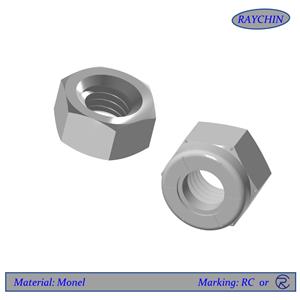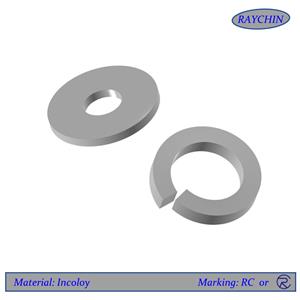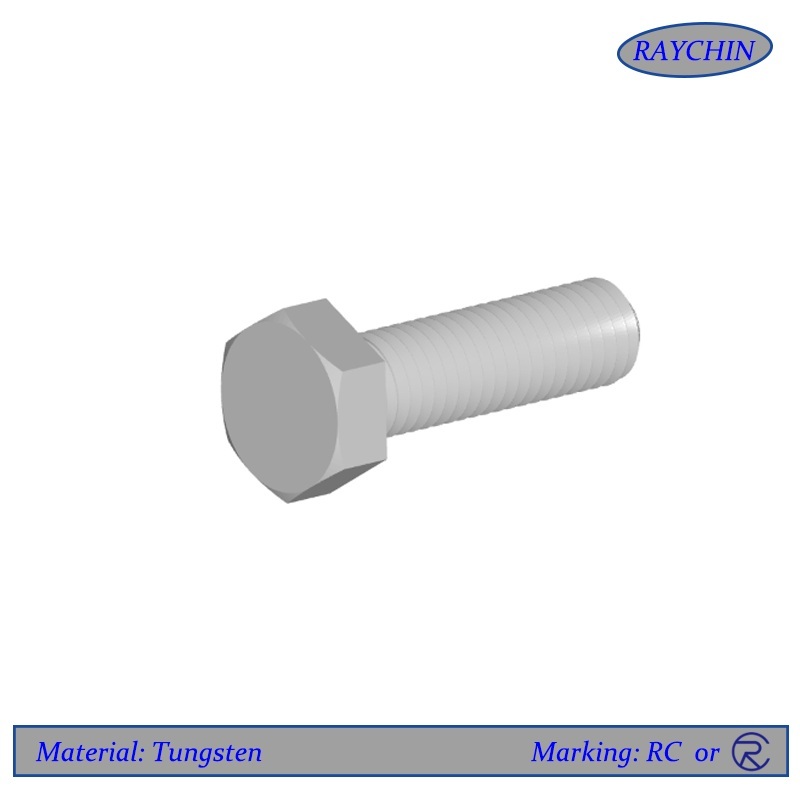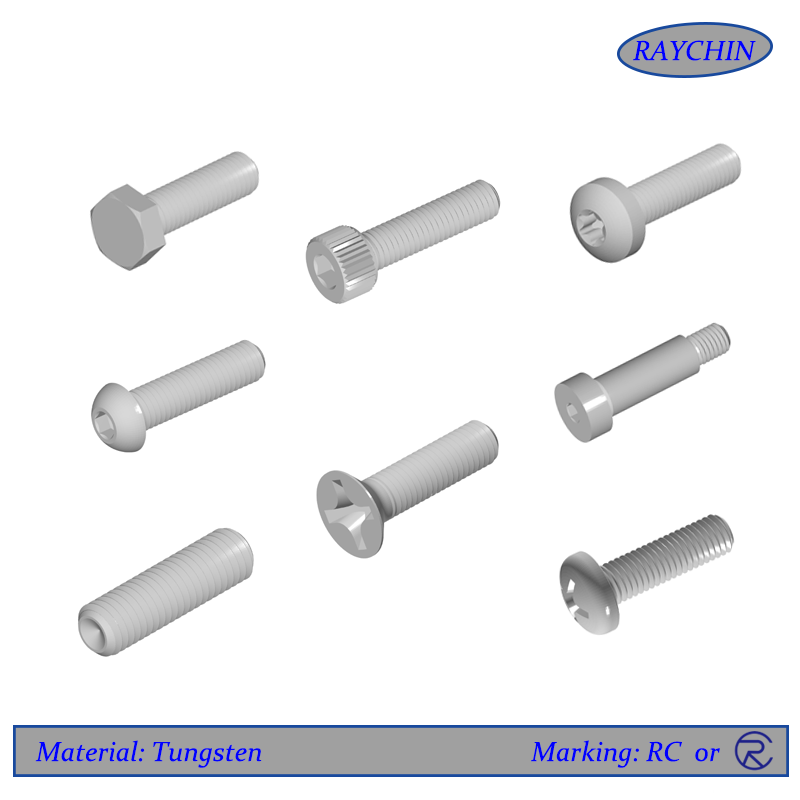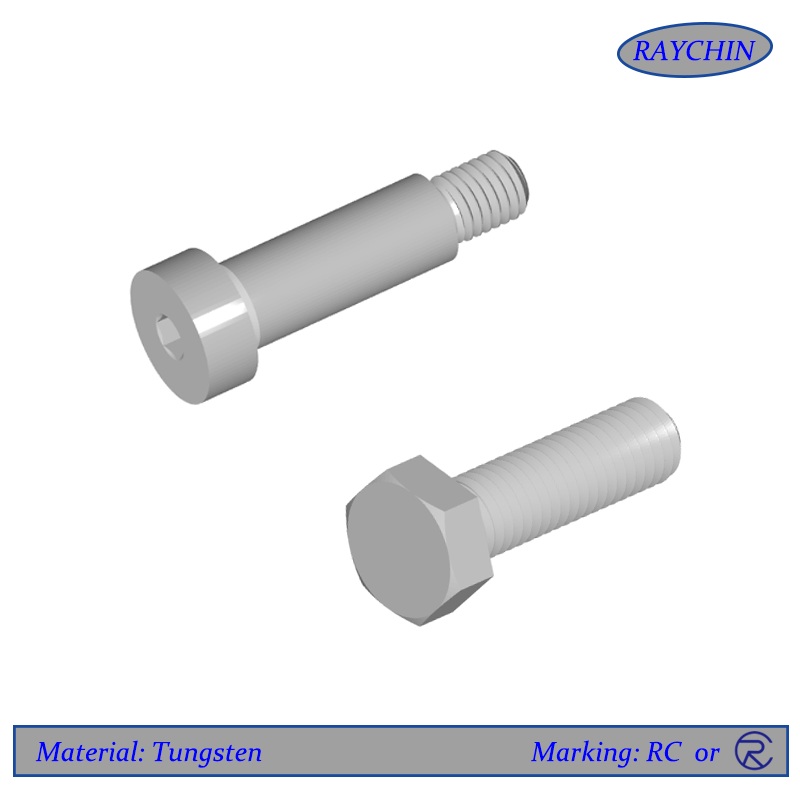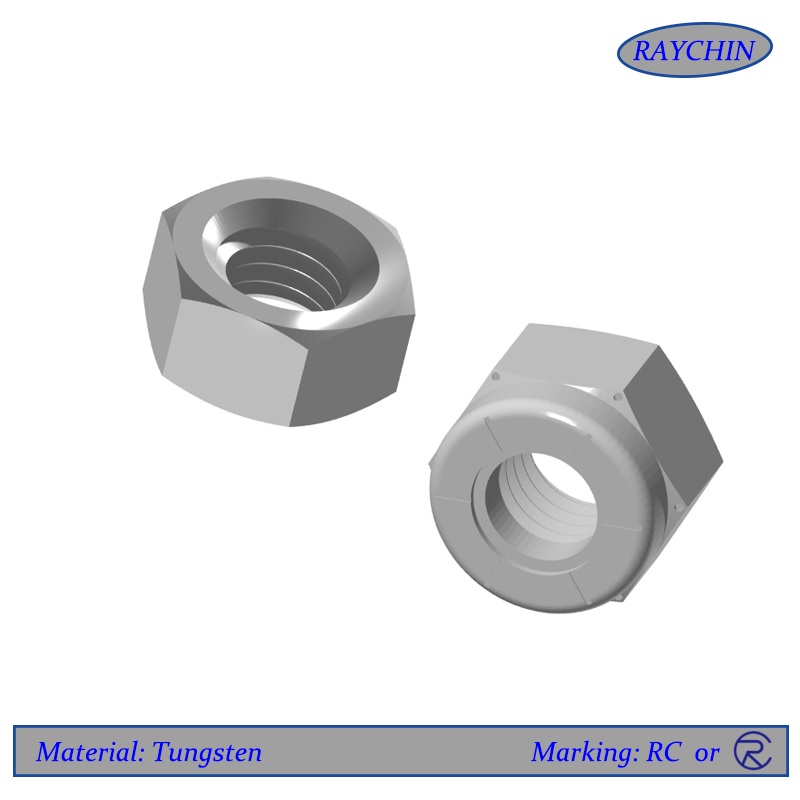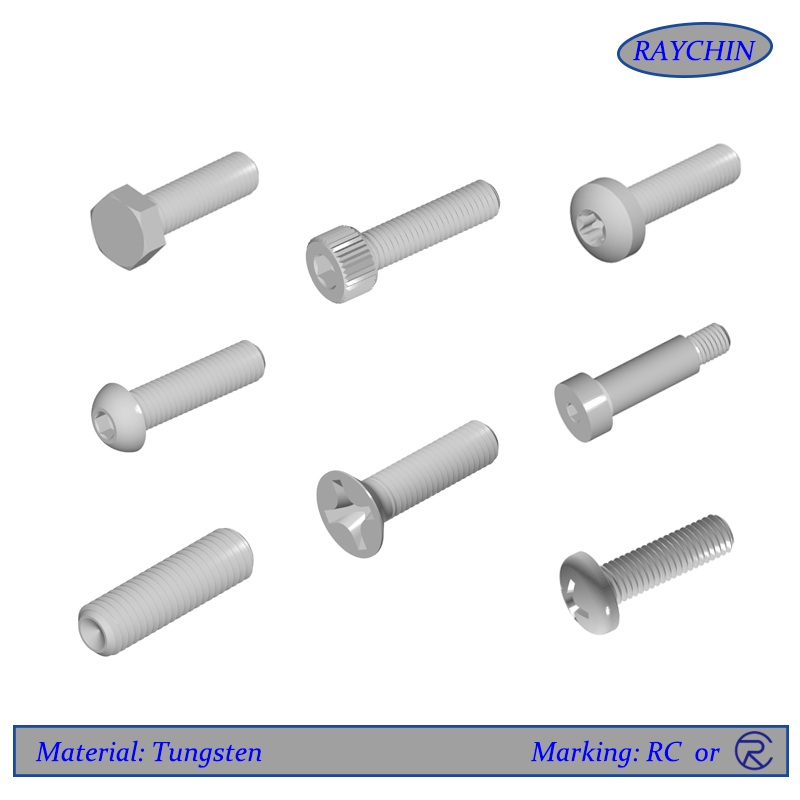Tungsten Hex Bolts
Tungsten Hex Bolts
Tungsten hex bolts are known for their extreme high density; because of this unique attribute, they are often used for balancing rotating parts. Tungsten’s high mass also makes these bolts radiopaque. This allows tungsten bolts to block radiation and show up well on x-rays – even better than lead. Another unique attribute of tungsten is its extrmely high melting point of 3420°C. The high temperature stability of tungsten hex bolts make them ideal for some of the hottest vacuum furnace environments. Beyond their high mass and temperature stability, tungsten fasteners are also very corrosion resistant.
Tungsten hex bolts are usually made from tungsten alloys per ASTM B777, and range from 90% to 97% pure tungsten, alloyed with nickel and copper or nickel and iron.

Ultra-high density & high temperature / strength stability
· Very high density of 19.3 gm/cc
· Radiopaque to x-rays and other radiation
· High strength at extreme high temperatures (vacuum)
· Excellent corrosion resistance
· Mechanical properties of tungsten hex bolts
· Hex head bolt features & benefits
· Tungsten material datasheet
Applications
· The aerospace industry depends on the hex tungsten bolts for their combination of high density and mechanical strength which allows them to reduce the physical size of components, offering greater control of weight distribution for propellers, inertial systems and fluid control systems to name a few.
· The heat treating / furnace industry uses tungsten bolts in high temperature vacuum furnaces due to tungstens great high temperature strength & stability.
· The oil & gas industry uses tungsten hex bolts for radiation shielding properties to protect equipment used in oil and gas detection, as well as down hole logging for density and ability to withstand intense hydrostatic pressure
· Tungsten bolts also play a role in the medical community for their low magnetic properties as well as their radiopaque properties.
Resources: Tungsten Torque Specs
Tungsten Bolts: Shoulder Bolts
Tungsten Hex Head Bolt Features and Benefits
It is important to differentiate between a Incoloy hex head bolt and hex head cap screw. Often people assume they are the same, but they are actually very different fasteners in terms of how they are manufactured, as well as from an application perspectiv. Regardless of your choice, tungsten hex heads offer strong, stable joints because of their large head service.
The Hex Comparison
Hex Head Bolts | Hex Head Cap Screw |
· Hex bolts have a flat end and lack the washer face under the head. · Appropriate for when mechanical properties are more important than dimensional tolerances. | · Features flat washer facing under the bolt head. · Also called a finished hex bolt. · Has tighter tolerances on the body dimensions. · Best used for precise applications where tight tolerances on the body dimensions are required. |
Tungsten Chemistry & Specifications
Tungsten Specifications: ASTM B777, Mil Spec T-21014D
Tungsten Alloy ASTM-B777 | Class 1 | Class2 | Class 3 | Class 4 | CP Tungsten |
Material Composition | 90% W 6%Ni 4%Cu | 92.5% W 5.25% Ni 2.25% Fe | 95% W 3.5% Ni 1.5% Cu | 97% W 2.1% Ni 0.9% Fe | 99.95% W |
Density | 17 gm/cc | 17.5 gm/cc | 18 gm/cc | 18.5 gm/cc | 19.3 gm/cc |
Density; Ibs/in3 | 0.6 | 0.6 | 0.7 | 0.7 | 0.697 |
Mil. Spec. T-21014 D | Class 1 | Class 2 | Class 3 | Class 4 |
|
Type | Type II & III | Type II & III | Type II & III | Type II & III |
|
Hardness; Rockwell C | 24.0 | 26.0 | 27.0 | 28.0 | 31.0 |
Ultimate Tensile Strength; PSI | 94,000 | 110,000 | 94,000 | 100,000 | 142,000 |
Yield Strength, .2% Offset; PSI | 75,000 | 75,000 | 75,000 | 75,000 | 109,000 |
Modulus of Elasticity; PSI | 40X10E6 | 47xlOE6 | 45 x10E6 | 53 X10E6 | 58x10E6 |
Coefficient of Thermal Expansion x | 5.4 | 4.6 | 4.4 | 4.5 | 4.2 |
Electrical Conductivity; %IACS | 14 | 13 | 16 | 17 | 18 |


